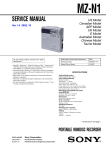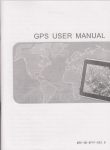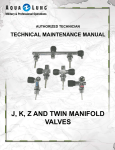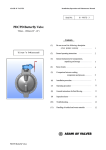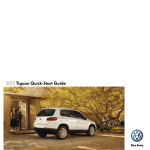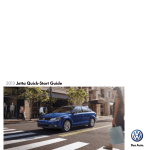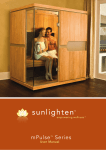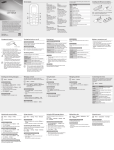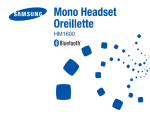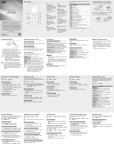Download Volkswagen 2013 User's Manual
Transcript
2013 Eos Quick-Start Guide The information within this guide must be used in conjunction with the information in the Volkswagen Owner’s Manuals. Refer to your vehicle’s Owner’s Manual for all information and warnings. By using this guide, you acknowledge that you are aware of and have read the warnings and information provided in the Owner’s Manual on the topics in this guide and will use this information to augment that material. Your Eos comes standard with quite a view. And that’s just the beginning. You’ll also discover dozens of smart features that make this convertible even more unique. Because at Volkswagen, we want to be sure that you’re getting the most out of your time behind the wheel. So we’ve created this guide to show you a few of the things it can do, and to show you how quickly you’ll be speaking fluent Volkswagen. Learn more at vw.com/eos2013 Bluetooth® Technology Text * PHONE to 50467 to watch the Bluetooth video. Press OK on the steering wheel (or PAIR on the RNS 315). Message and data rates may apply. Pairing your phone First, check your phone’s compatibility at www.vw.com/bluetooth. Start the ignition. Your car’s Bluetooth system will be in “discovery” mode for the next three minutes. (If your car is equipped with an RNS 315 touchscreen display, power it on.) From the Bluetooth menu on your phone, search for new devices and select VW PHONE. A connection request will appear on the multi-function display (or on the RNS 315). The multi-function display (or your RNS 315 screen) will then show a PIN.** Make sure the same PIN is displayed on your phone and press OK on the steering wheel (or press YES on the RNS 315). Then press PAIR on your phone.† Phone button Reconnect Automatically If your phone displays a prompt asking to connect to VW PHONE, make sure to enable Microphone button future automatic connections. *Do not text while driving. **Some phones may require entering a four-digit PIN (0000) to complete the pairing process. †Once the PIN is shown, pairing must be completed within 30 seconds. Otherwise the process will need to be repeated. Bluetooth Voice Recognition Press the microphone button until you hear a chime. Your VW will say, “Main menu.” Then take the following steps. Text * VRECO to 50467 to watch the Voice Recognition video. Message and data rates may apply. Call by name After you hear a beep, say, “Call” followed by the name of the person you want to call. For example, “Call Mike Brown.” The system will repeat your request. Say, “Yes” if correct. The system will answer, “Calling Mike Brown.” Redial After the beep, say, “Redial.” Help After the beep, say, “Help.” Then follow the prompts. Answer an incoming call The Bluetooth system will interrupt your car stereo with a ringtone. Press the phone button on the multi-function steering wheel. *Do not text while driving. Learn more at vw.com/eos2013 Bluetooth Phone Pairing Important Warnings and Safety Information, which you must read, are listed on the last panel under BLUETOOTH TECHNOLOGY WARNINGS. Premium VIII Audio Text * PREM8 to 50467 to watch the Premium VIII video. Message and data rates may apply. Select and save a preset radio station Press AM, FM or SAT to select a band. Use the tuning knob at the lower right to select a station, then press and hold any preset station soft key until you hear a confirmation beep. The new station will appear in the display. By pressing the Presets soft key, you can change through additional presets. *Do not text while driving. Streaming audio with Bluetooth® technology First, pair your compatible Bluetooth equipped phone or audio player. (Refer to the pairing instructions in this booklet.) Press the MEDIA hard key. Press the BT-Audio soft key. To navigate through your music, press the PLAY/PAUSE, PREVIOUS, and NEXT TRACK soft keys. HD Radio® Programming. HD Radio is totally free programming, offering crystal clear sound—FM stations have CD-quality sound, while AM stations sound like FM stereo. HD Radio also offers more variety, as many FM stations broadcast extra HD multicast channels. HD Radio Signal Interruption. When leaving the HD coverage area, HD1 channels will switch to the analog signal, while HD2/ HD3 channels will cut off completely, without gradual fading. This is normal. The signal will refresh as you drive. SiriusXM Satellite Radio. New Volkswagen vehicles come with a three-month trial subscription to the Sirius Select package. Infrequently, tall buildings and tunnels may interrupt the satellite signal. This is normal. The signal will refresh as you drive. For more information, please refer to the SiriusXM brochure in your glove box. Learn more at vw.com/eos2013 Premium VIII Audio Important Warnings and Safety Information, which you must read, are listed on the last panel under PREMIUM VIII WARNINGS. iPod® Adapter To connect your device, here’s all you need to do Premium VIII First, note that your iPod music player must be Generation Four or newer.* Connect it to your car’s MDI cable. Press the MEDIA hard key. Press the MEDIA-IN soft key until the external audio device is shown in the display. To choose a song, press the Selection soft key. To display the category, press the key with the folder icon at the upper left of the screen. To return to the main screen, press the Back soft key on the upper right corner of the screen. *For more information on iPhone 5, please visit vw.com/eos2013 Playing your media device with the auxiliary jack First, plug in your media device to the auxiliary jack. Note that an auxiliary cable does not come standard. Premium VIII • Press the SETUP hard key. • Press the MEDIA soft key. • Press the Enable AUX Input soft key. • Press the MEDIA hard key. Learn more at vw.com/eos2013 Important Warnings and Safety Information, which you must read, are listed on the last panel under IPOD ADAPTER WARNINGS. iPod Adapter Climatronic® Heating and Cooling To cool or heat the interior Turn the temperature dial to 72.° Press the AUTO button. Like a thermostat, the system will maintain the temperature. In extreme heat, press the MAX AC button. When a comfortable temperature has been reached, push the AUTO button again. The Climatronic system works automatically to heat or cool the car’s cabin and regulate the fan speed as needed. Set and synchronize temperatures for driver and passenger Defrost the windshield MAX • Press the MAX defrost button. • The AC function comes on automatically to dry the air. • When the windshield is clear, push the AUTO button to return to your automatic climate control settings. Two climate settings—Top Open and Top Closed The driver turns the left dial until the desired temperature is shown above the dial. The passenger can choose a different temperature by turning the right dial. The passenger’s temperature can be synchronized with the driver’s temperature by pressing the SYNC button. When the light is on, SYNC is activated. When you turn the Climatronic system on, it automatically detects whether the top is open or closed. Then it will revert to the last saved setting in that position. Learn more at vw.com/eos2013 Important Warnings and Safety Information, which you must read, are listed on the last panel under CLIMATRONIC SYSTEM WARNINGS. Climatronic Heating & Cooling Cruise Control Activate • Locate the cruise control stalk on the left hand side of the steering column. • Turn the switch on top of the cruise stalk Rocker Switch to the ON position. • The speedometer icon will appear in the multi-function display. Cancel and resume mph 60 • To cancel the cruise speed, press the brake When you get to your cruising speed, press the rocker switch at the end of the cruise stalk towards SET/ –. pedal or turn the switch on the top of the Set cruising speed stalk to CANCEL. • The CRUISE light will go off. • To resume your speed, press the rocker The green CRUISE light will appear in the instrument cluster. Your most recently set speed will appear as a small icon in the available multifunction display. It will remain in memory until you turn off the vehicle, or until you turn the switch on the top of the cruise stalk to the OFF position. To increase your speed, press the rocker switch up, towards RES/+. switch up, towards RES/+. To reduce speed, press the rocker switch down, towards SET/–. Learn more at vw.com/eos2013 Important Warnings and Safety Information, which you must read, are listed on the last panel under CRUISE CONTROL WARNINGS. Cruise Control Key Fob Programming Customize which doors lock or unlock when you press the key fob First, make sure your vehicle is parked. Your car won’t let you do this while you’re driving. Press “Unlock doors” to adjust which doors lock or unlock when the key fob is pressed once. “All doors” unlocks all doors. Menu button “Single door” unlocks only the driver’s door. Press the button with the menu icon located on the steering wheel until you see the “Settings” screen on the multi-function display. “Vehicle side” unlocks the doors on the driver’s side of the vehicle. Press the down arrow to scroll to “Convenience.” Press OK. Press the up or down arrows to select an option. Scroll down to “Central Locking”—press OK. Press OK to select your preference. Trunk Open the trunk There are two ways to open the trunk: • Briefly press the trunk release button on the key fob to unlock the trunk. Then push the VW logo with your thumb and use the logo as a handle Close the trunk to open the trunk. • Or, you can pull the trunk release Grab the trunk’s specially designed, inside handle and pull down. When the trunk makes contact with the lock, the system will automatically lock the trunk. button on the driver door. Then use the VW logo to open the trunk. Learn more at vw.com/eos2013 Important Warnings and Safety Information, which you must read, are listed on the last panel under KEY FOB WARNINGS and LUGGAGE COMPARTMENT WARNINGS. Keys / Trunk Sunroof Open The sunroof switch is on the console. Close Tilt To close the sunroof, pull and hold the switch. To open to the tilt position, press and release the switch once. To slide the sunroof open, press and hold the switch. Raise the wind deflector to cut down on wind noise • We designed the sunroof to help equalize air pressure and minimize wind noise. • Raise the wind deflector in the front by pressing it after the sunroof is open. Important Warnings and Safety Information, which you must read, are listed on the last panel under SUNROOF WARNINGS. Convertible Open the Eos convertible roof Park the vehicle on level ground. Close the convertible roof Make sure your vehicle is in park. With the engine on, lift and hold the control switch until the roof is completely closed. The chime will sound as long as the roof is closing. Check the luggage compartment in the trunk and make sure no objects are improperly stored. The chime will stop as a signal to release the control switch. Convertible switch With the engine on, press and hold the control switch in the center console until the roof is completely open. The chime will sound as long as the roof is retracting. Sunroof switch The chime will stop as a signal to release the control switch. Learn more at vw.com/eos2013 Important Warnings and Safety Information, which you must read, are listed on the last panel under CONVERTIBLE ROOF WARNINGS. Sunroof / Convertible Easy Entry Move the front seat forward Easy Entry, passenger seat (manual) Pull up the handle on top of the seat. Fold the back of the seat forward. Press and hold the rocker switch to move the seat all the way forward. Move the front seat forward • Pull the handle on the top of the seat. • Pull the back of the seat forward until it locks. • Slide the entire seat forward. Reposition the seat Rocker switch To return the seat Pull up the handle again to bring the back of the seat to the initial position. Press and hold the rocker switch again to return the seat. • After the rear passenger gets in the back seat, the front passenger should push back the seat. (Note that the back of the seat will remain tilted forward.) • After repositioning the seat, pull the handle on top of the seat again to adjust the back of the seat. • The front passenger should then adjust the seat to maximize legroom for the rear passenger. Important Warnings and Safety Information, which you must read, are listed on the last panel under ELECTRICAL EASY ENTRY WARNINGS. DSG® Transmission The DSG technology is a groundbreaking “two-in-one” concept. Totally unlike a conventional automatic transmission, it combines the fuel efficiency of a clutch-operated transmission with the convenience of automatic shifting. Twin electronically controlled shafts manage gear selection, always anticipating your next shift. Learn more at vw.com/eos2013 Easy Entry / DSG Tire Pressure Monitoring System Correct tire pressure Seeing the TPMS light? Here’s what to do. The correct tire pressure is displayed on the sticker on the driver’s door jamb. Inflate your tires to those specifications, not to the number on your tires. Cooler temperatures may cause a warning to appear and then disappear as the tires warm up. This is a good reminder to check and adjust the tires to the proper Inflate the low tires to the correct pressure as soon as possible. inflation pressure. The TPMS light will go off. The TPMS light will remain on until the tires are filled to the proper pressure. Learn more at vw.com/eos2013 Important Warnings and Safety Information, which you must read, are listed on the last panel under TPMS WARNINGS. Tire Pressure Important Safety Warnings BLUETOOTH® WARNINGS • Collisions and injuries can occur if the driver is distracted. Speaking on or using a phone while driving can distract the driver from traffic. • Select the volume settings so that the acoustic signals from the outside are still audible (for example, the sirens of emergency rescue vehicles). Observe legal regulations. • In areas with no or poor mobile network coverage and possibly in tunnels, garages and subways, phone conversations may be interrupted, and it may be impossible to make phone calls–even emergency calls! • In some countries, emergency calls may only be supported when the mobile phone is connected to a mobile phone package which has a SIM card that is “not blocked” and/or has sufficient credit on it. • Unmounted or improperly mounted mobile phones can fly around in the event of a sudden driving or braking maneuver or a collision. This may cause injuries. • Never place or mount a mobile phone on doors, on the windshield or on or near the area on the steering wheel marked “AIRBAG,” the instrument panel, the seat backrests or the areas between these points and the driver/passengers. Mobile phones can lead to serious injuries in cases of collisions, especially when the airbags are inflated. • Always switch off your mobile telephone at gas stations or wherever there is a fire or explosion hazard. Electromagnetic radiation can cause sparks which can start fires. • The mobile phone will automatically connect to the mobile network when the Bluetooth connection to the mobile phone package is disconnected. • Using a radio device in the vehicle without a connection to an external antenna might exceed electromagnetic radiation thresholds. This also applies if the external antenna is not installed properly. • Keep a distance of at least eight inches between the antennas of the mobile phone and the pacemaker, since mobile phones can affect the functionality of a pacemaker. • Do not carry a mobile phone on standby mode in the breast pocket directly on top of a pacemaker. • If interference is suspected, immediately switch off the mobile phone. • Always keep the armrest closed while driving. The center armrest can interfere with the driver’s elbow movement and thus cause collisions and severe injuries. CLIMATRONIC® WARNINGS Poor visibility increases the risk of collisions and other accidents that cause serious personal injuries. • Always make sure all windows are clear of ice, snow, and condensation for good visibility to the front, sides, and rear. • Maximum heating output and fast defrosting will only be possible after the engine has reached operating temperature. Wait until you have good visibility before driving off. • Always make sure you know how to properly use the heating and ventilation systems as well as the rear window defogger that you will need for good visibility. • Never use air recirculation for long periods of time. When the air conditioner is off and recirculation mode is on, condensation can quickly form on the windows and greatly reduce visibility. • Always switch off recirculation mode when it is not needed. Stale air causes driver fatigue and reduces driver alertness, which can cause accidents, collisions, and serious personal injury. • Never switch off the fan for a long period of time and never use air recirculation a long period of time because no fresh air will come into the passenger compartment. CRUISE CONTROL WARNINGS Using the cruise control when it is not possible to drive safely at a constant speed can be dangerous and can lead to an accident and serious personal injuries. • Never use cruise control when driving in heavy or varying traffic or when you cannot keep a safe distance between you and the vehicles ahead of you. • Never use cruise control on steep, winding, or slippery roads (such as gravel roads, wet roads, or snowy or icy roads) or on roads with standing water. • Never use cruise control when driving off-road or on unpaved roads. • Always adjust your speed and the distance you keep between you and the vehicles ahead of you to the road, traffic, weather and visibility conditions. • Watch for a message in the instrument cluster display indicating whether the roof has been properly closed. • The armrest can affect the elbow room of the driver and thus cause accidents and severe injuries. Always keep the armrest closed while driving. ELECTRICAL EASY ENTRY WARNINGS Careless or unsupervised use of the Easy Entry can cause accidents and severe injuries. • Never adjust the Easy Entry while driving. KEY FOB WARNINGS Improper use of vehicle keys can result in serious personal injury. • Always take the key with you when you leave the vehicle. It can be used to start the engine and operate vehicle systems such as the power windows, leading to serious personal injury. Children or other unauthorized persons could also lock the doors and the luggage compartment. • Never leave children, disabled persons, or anyone who cannot help themselves in the vehicle. The doors can be locked with the remote control key. This could result in people being trapped in the vehicle in an emergency. For example, depending on the time of year, people trapped in the vehicle can be exposed to very high or very low temperatures. • Heat build-up in the passenger and luggage compartment of a parked vehicle can result in temperatures in the vehicle that are much higher than outside temperatures, particularly in summer. Temperatures can quickly reach levels that can cause unconsciousness and death, particularly to small children. • Never remove the key from the ignition switch while the vehicle is moving or rolling to a stop. The steering wheel will lock and you will not be able to steer or control the vehicle. IPOD® ADAPTER WARNINGS Driver distraction, including the operation of external audio devices, can cause accidents and serious personal injury. • Always focus your undivided attention on driving the vehicle. • Never display video images in the display when the vehicle is moving. • Use the radio navigation system only if road, traffic, and weather conditions permit and you will not be distracted from your driving. • Always obey applicable laws regarding the use of displays when the vehicle is moving. • Always adjust volume so that horns and warning sounds from outside the vehicle (police and fire truck sirens, for example) can be clearly heard at any time. • Observe legal regulations. • Always drive attentively and responsibly. • Setting the volume too high can damage the hearing. This applies especially to volumes above about 85 decibels. • Select volume settings so that acoustic signals from the outside are always audible (for example, the sirens of emergency rescue vehicles). • Please lower the volume before changing or connecting to an audio source. • Unmounted or improperly mounted external devices can be thrown through the passenger compartment in the event of a sudden driving or braking maneuver or an accident, causing injury. • Never leave external devices in the doors, on the front windshield, on or near the area marked “AIRBAG” on the steering wheel, instrument panel, seat backs, or between these areas and the occupants. External devices can cause serious injury in the event of an accident, especially if the airbags inflate. • Connecting cables of external devices may obstruct the driver. Route cables so as not to interfere with the driver. LUGGAGE COMPARTMENT WARNINGS Accidents and severe personal injuries can result if you unlock, open, or close the luggage compartment lid when someone is in the way. • Only open or close the luggage compartment lid if no one is in the way. • After closing the luggage compartment lid, always make sure that it is properly closed and locked so that it cannot open suddenly when the vehicle is moving. The closed luggage compartment lid must be flush with the surrounding auto body parts. • Always keep the luggage compartment lid closed while driving to help keep poisonous exhaust gas from being drawn into the vehicle. • Never open the luggage compartment lid when a luggage rack is installed and loaded. If, for example, there are bicycles on a carrier on the luggage compartment lid, it is possible that the lid will not be able to open automatically. • To help prevent unintended operation of cruise control, switch the system off when it is not being used. • It is dangerous to use the Resume feature when the previously set speed is too high for the existing road, traffic, or weather conditions. • When traveling downhill, the cruise control may not be able to maintain a constant speed. The vehicle may speed up because of its own weight. Downshift and/or use the foot brake to slow the vehicle. CSC ROOF WARNINGS Serious injury may result from driving when the CSC roof has not properly locked into place or when the process of opening or closing the convertible top is incomplete. • Never drive if the CSC roof is not either completely open or completely closed and locked – unless you must move the vehicle to a safe place away from traffic. In this case: –D o not drive any faster than a slow walk. Even at low speeds, air resistance can twist or deform the roof or tear it off completely, endangering vehicle occupants and others. • Accidents and severe injuries can result if the CSC roof is opened or closed when someone is in the way. •N ever open or close the CSC roof unless the vehicle is parked at a safe distance from traffic. •D o not open or close the CSC roof unless you have made sure that nobody is in the way of the luggage compartment lid, the roof system, or other moving parts. • Check to make sure that the closed CSC roof is securely latched. • If convertible top operation is interrupted, please note the following: – The CSC roof may not stop moving immediately. Gravity may cause the CSC roof to keep moving. –G radually (may take up to eight minutes), the CSC roof will automatically lower itself into a balanced position. – The CSC roof is, however, not latched in this position. Stop! • If interruption of opening or closing process causes the roof to come to rest in its forward position, the roof will not be latched. • If you are unable to get the CSC roof to close “normally,” latch the roof using the emergency closing procedure. An open luggage compartment lid may fall on its own because of the additional weight. If necessary, prop open the luggage compartment lid. Remove the weight from the luggage rack first. • Close and lock the luggage compartment lid and all doors when the vehicle is not in use. First, make sure that no one is left inside the vehicle. • Never leave your vehicle unattended or let children play around your vehicle, especially when the luggage compartment lid is open. A child could crawl into the vehicle and pull the luggage compartment lid shut, becoming trapped and unable to get out. A closed vehicle can become very hot or very cold, depending on the season. Particularly in the summer, heat build-up in the passenger and luggage compartment of a parked vehicle can result in temperatures in the vehicle that are much higher than the outside temperatures. Temperatures can quickly reach levels that can cause unconsciousness and death, particularly to small children. • Never leave children or anyone who cannot help themselves behind in the vehicle. They may lock the vehicle with the vehicle key or the power locking switch and lock themselves in. PREMIUM VIII WARNINGS Distracting the driver from traffic can lead to collisions and injuries. Using the radio system while driving can distract from traffic. • Observe legal regulations. • Always drive attentively and responsibly. • Setting the volume too high can damage the hearing. This applies especially to volumes above about 85 decibels. • Select volume settings so that acoustic signals from the outside are always audible (for example, the sirens of emergency rescue vehicles). • Please lower the volume before changing or connecting to an audio source. • Unmounted or improperly mounted external devices can be thrown through the passenger compartment in the event of a sudden driving or braking maneuver or a collision, causing injury. • Never leave external devices in the doors, on the front windshield, on or near the area marked “AIRBAG” on the steering wheel, instrument panel, seatbacks, or between these areas and the occupants. External devices can cause serious injury in the event of a collision, especially if the airbags inflate. • Connecting cables of external devices may obstruct the driver. Route cables so as not to interfere with the driver. • The armrest can affect the elbow room of the driver and thus cause collisions and severe injuries. Always keep the armrest closed while driving. • Injuries can be caused by invisible laser beams if the housing of the CD player is opened. Have the CD player repaired only by a specialist. RNS 315 WARNINGS Distracting the driver from traffic can lead to collisions and injuries. Using the radio system while driving can distract from traffic. • Observe legal regulations. • Always drive attentively and responsibly. • Setting the volume too high can damage the hearing. This applies especially to volumes above about 85 decibels. • Select volume settings so that acoustic signals from the outside are always audible (for example, the sirens of emergency rescue vehicles). • Please lower the volume before changing or connecting to an audio source. • Unmounted or improperly mounted external devices can be thrown through the passenger compartment in the event of a sudden driving or braking maneuver or a collision, causing injury. • Never leave external devices in the doors, on the front windshield, on or near the area marked “AIRBAG” on the steering wheel, instrument panel, seatbacks, or between these areas and the occupants. External devices can cause serious injury in the event of a collision, especially if the airbags inflate. • Connecting cables of external devices may obstruct the driver. Route cables so as not to interfere with the driver. • The armrest can affect the elbow room of the driver and thus cause collisions and severe injuries. Always keep the armrest closed while driving. • Injuries can be caused by invisible laser beams if the housing of the CD player is opened. Have the CD player repaired only by a specialist. SUNROOF WARNINGS Improper use of the power sunroof can result in serious personal injury. • Always make sure that no one is in the way of the power sunroof when it is closing. • Always take the key with you when you leave the vehicle. • Never leave children or disabled persons in the vehicle – particularly if they have access to the vehicle key. Unsupervised use of the remote control vehicle key makes it possible to lock the vehicle, start the engine, turn on the ignition and operate the sliding and tilting roof. • You can still open or close the power sunroof for several minutes after you switch off the ignition, as long as the driver or front passenger door has not been opened. TIRE PRESSURE MONITORING SYSTEM WARNINGS Incorrect tire pressures and/or underinflation can cause sudden tire failure, loss of control, collision, serious personal injury or even death. • When the warning symbol appears in the instrument cluster, stop and inspect the tires. • Incorrect tire pressure and/or underinflation can cause increased tire wear and can affect the handling of the vehicle and stopping ability. • Incorrect tire pressures and/or underinflation can also lead to sudden tire failure, including a blowout and sudden deflation, causing loss of vehicle control. • The driver is responsible for the correct tire pressures for all tires on the vehicle. The recommended tire pressure values are listed on a sticker inside the driver door. • The TPMS can only work correctly when all tires on the vehicle are filled to the correct cold-tire inflation pressure specified for the tires installed on the vehicle. • Using incorrect tire pressure values can cause accidents or other damage. Check the pressure in all 4 tires when the tires are still cold. Never reduce air pressure in warm tires to match cold-tire inflation pressure. • Always inflate the tires to the correct specified cold-tire pressure values for the tires installed on the vehicle; see the tire inflation pressure label on the driver door jamb. • Always inflate tires to the recommended and correct tire pressure before driving off. •D riving with underinflated tires causes them to flex (bend) more, letting them get too hot, resulting in tread separation, sudden tire failure, and loss of control. • E xcessive speed and/overloading can cause heat build-up, sudden tire failure and loss of control. • If the tire pressure is too low or too high, the tires will wear prematurely and the vehicle will not handle well. • If the tire is not “flat” and you do not have to change a wheel immediately, drive carefully and at reduced speed to the nearest service station to check the tire pressure and add air as required. • When replacing tires or wheel rims on vehicles equipped with TPMS always read and heed the information and all WARNINGS regarding tires and wheels. Got questions? We’ve got answers. Go to vw.com/eos2013 Owning a VW gets even better Visit our Volkswagen blog and you’ll find plenty Call your VW dealer to make an appointment for a Second Vehicle Delivery within the first 90 days or 6,000 miles. At the of how-to guides and maintenance videos. appointment, we’ll answer any questions you may have about your new Volkswagen, so you can get more out of your car. Call 1-800-444-8982 Volkswagen Carefree Maintenance | As a Volkswagen driver, you can visit any VW dealer and receive routine maintenance like oil changes and vehicle inspections from certified techs that speak fluent Volkswagen. Contact the Volkswagen Loyalty Center, and a friendly Volkswagen representative will be happy to assist you. Schedule your Second Vehicle Delivery by: Month Learn more at vw.com/eos2013 | Date | Year















